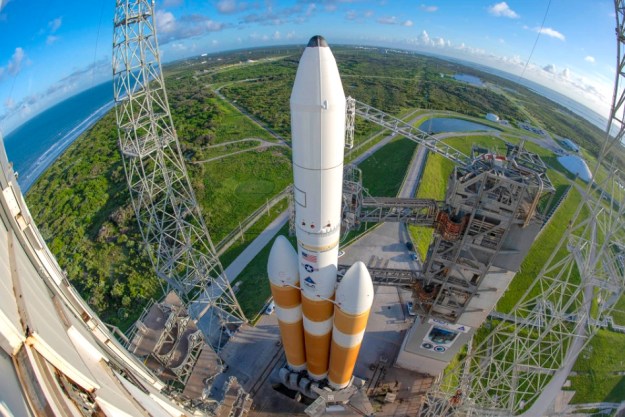NASA is making progress in the development of its troubled Space Launch System (SLS), completing structural testing with a liquid oxygen tank test.
This next-generation rocket is intended for use in the upcoming NASA mission to the moon under the Artemis project, and eventually even to carry astronauts to Mars. However, the project has suffered from numerous delays and has attracted criticism for running behind schedule and going over budget.
The structural testing campaign for the rocket consisted of almost 200 tests, culminating in increasing the pressure on a replica of the liquid oxygen tank until it ruptured and water gushed out of the tank. The pressure was created by bolting the tank to a steel rig and using hydraulic cylinders positioned around the tank to replicate the millions of pounds of pressure that the rocket could experience during launch or flight.

The test was performed at NASA’s Marshall Space Flight Center in Huntsville, Alabama.
“The Marshall test lab team has worked closely with the Space Launch System Program to test the rocket’s structures from the top to bottom,” said Ralph Carruth, Marshall’s test lab director. “After watching the test stands being built, working alongside SLS and Boeing engineers to establish testing procedures and conducting and gathering results of five structural qualifying tests, we are proud to contribute data shows these structures can withstand the rigors of flight.”
By testing the tank to failure, the engineers were able to learn about how it would stand up in a real flight and to identify any structurally weak areas. Other parts of structural testing included testing the upper part of the rocket, as well as testing the four largest parts of the core stage: The engine section, the intertank, the liquid hydrogen tank, and the liquid oxygen tank.
“This year is a landmark year for core stage testing for the Artemis missions,” said Julie Bassler, the SLS stages manager. “We have successfully completed our core stage major structural tests at Marshall Space Flight Center and are making progress on Green Run testing of the Artemis I core stage at Stennis Space Center that will simulate launch. All these tests are not only valuable for the first Artemis mission but also validates the new integrated design of the SLS core stage structure, propulsion and avionics systems and ensures its readiness for future flights.”
Editors' Recommendations
- NASA reveals new target date for first crewed Starliner launch
- First crewed Starliner test needs good weather for launch. Here’s the forecast
- NASA selects 9 companies to work on low-cost Mars projects
- Watch how NASA plans to land a car-sized drone on Titan
- NASA needs a new approach for its challenging Mars Sample Return mission



